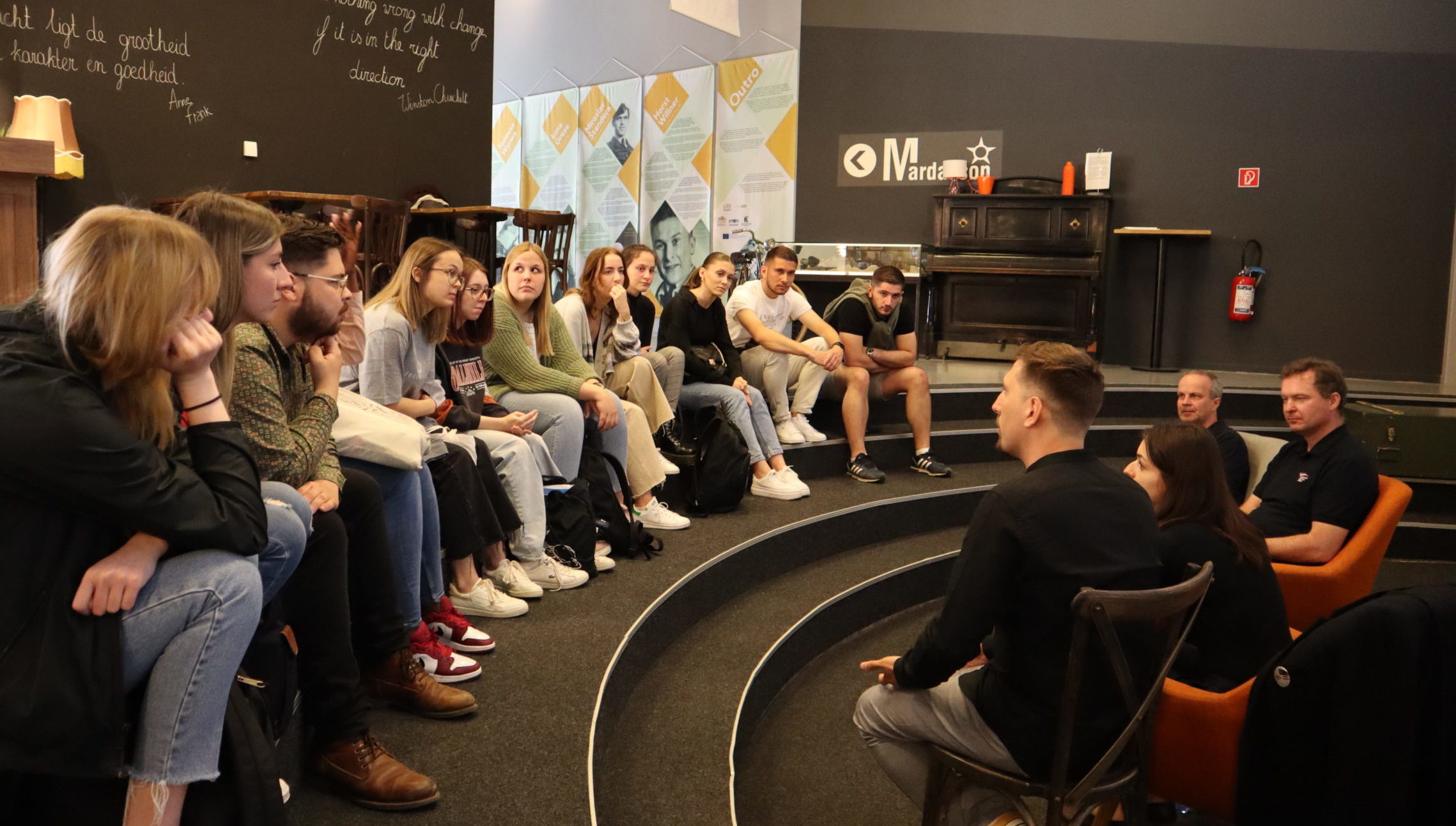After Krakow (Poland) and Pilsen (Czechia), EASTory through their Eyes continued with a youth event at the Bastogne War Museum (Belgium) on 17 May. The event was composed of four workshops on the topic of WWII history and its consequences in Eastern and Western Europe, and was funded by the Europe for Citizens Programme of the European Union.
The Bastogne War Museum welcomed more than 60 students of the Henallux College of Bastogne – future primary school teachers –, the EASTory through their Eyes project partners from the Home Army Museum in Krakow and the City of Pilsen, artists and Battle of the Bulge eyewitness Marcel Thelen for a lively morning of discussions and debates.
Four rotating workshops were organised on the Museum premises. In the newly-opened Mustang Flight Zone room, students listened to the story of Marcel Thelen, who was ten years old during the Battle of the Bulge. Mr Thelen – a German native speaker from a village close to Saint-Vith, Belgium – recounted his memories of life during the war, including the arrest and deportation of his father and his brother to Dachau. In the outdoor exhibition ‘Art Liberty: from the Berlin Wall to Street Art’, students could discuss the role of art in remembering iconic events in Europe, such as the fall of the Berlin Wall, with two street artists performing. A third workshop led by a historian served to learn more about the Second World War and its consequences in Europe – from the Cold War to the European unification process.
In the museum cafeteria, close to the EASTory through their Eyes travelling exhibition, students had an insightful debate with project partners from the Home Army Museum in Krakow and the City of Pilsen. Using the examples of the faces of the EASTory through their Eyes exhibition, they discussed the differences in the consequences of WWII for Poland and Czechia – the swift communist takeover at the end of the war did not entail freedom and democracy but rather a renovated, albeit different, occupation and oppression that only came to an end in 1989-1990.
To conclude the morning, a Wall Vector of Memory, a marker of the Liberation Route Europe – another of the initiatives of the LRE Foundation – was handed out to the Bastogne War Museum’s Director Mathieu Billa before the classic group photo.
Relive the day and listen to the impressions of the participants in a short recap video on the LRE Foundation’s YouTube channel.
